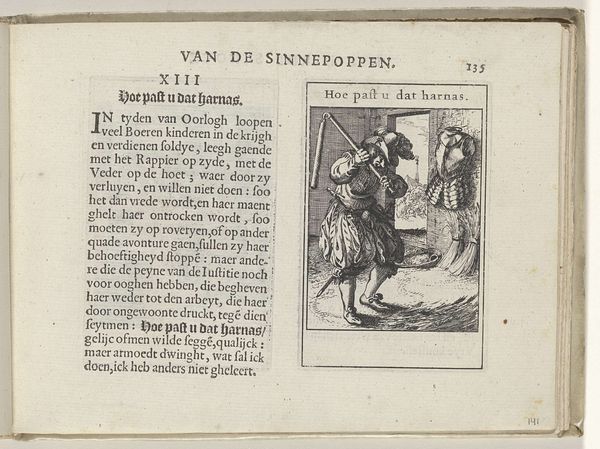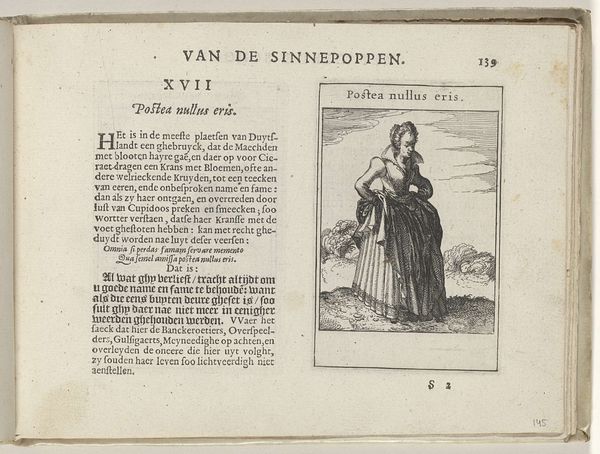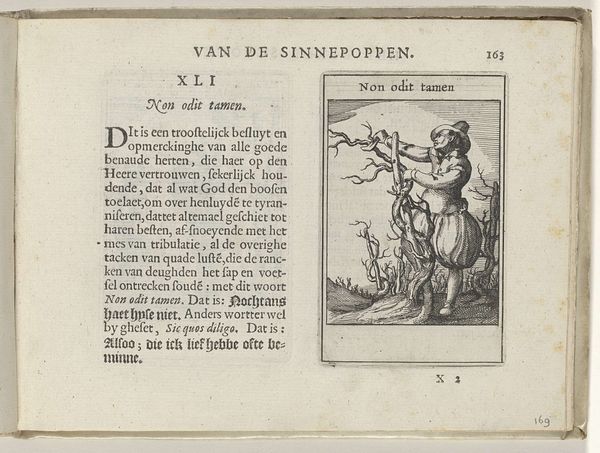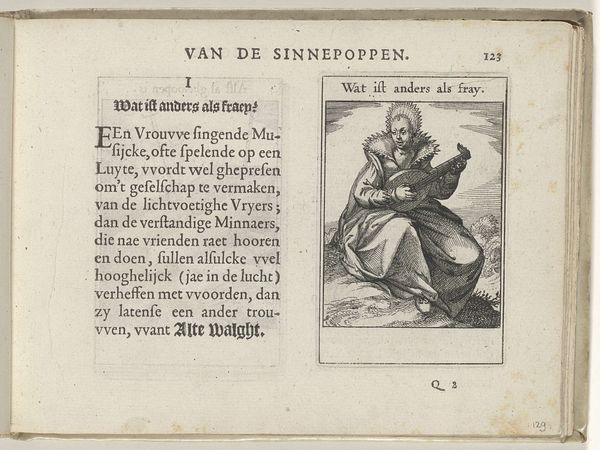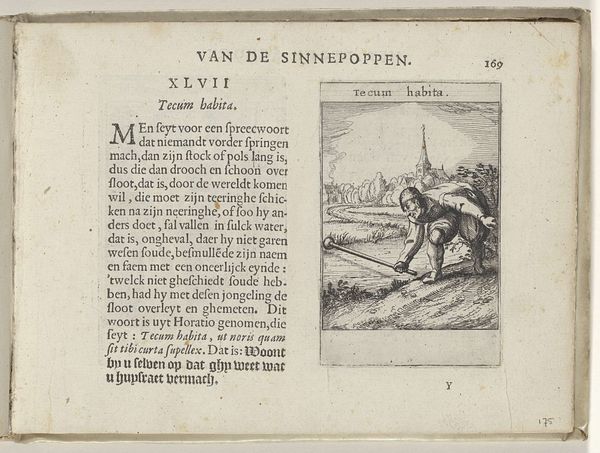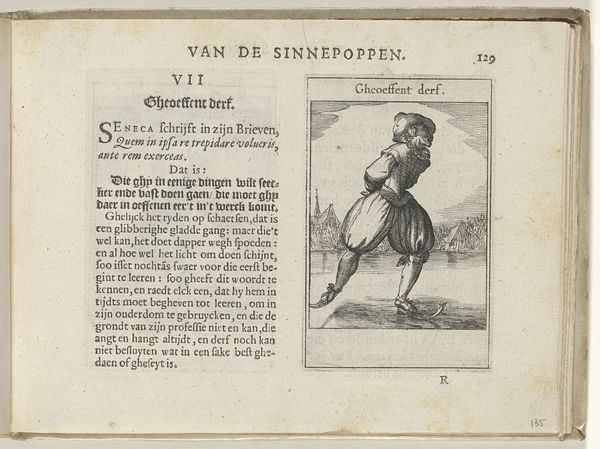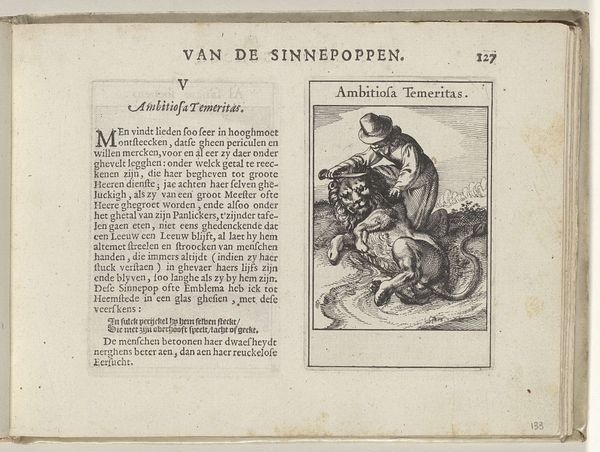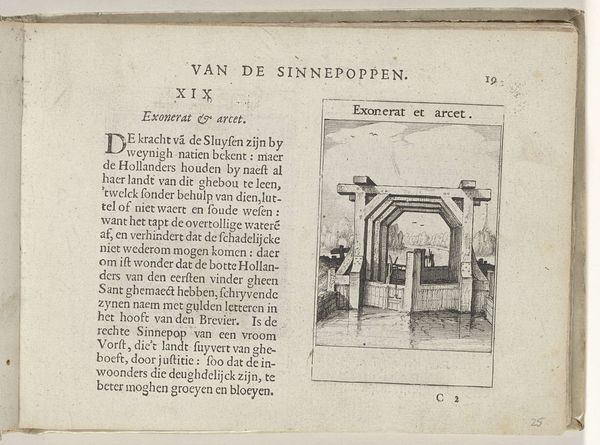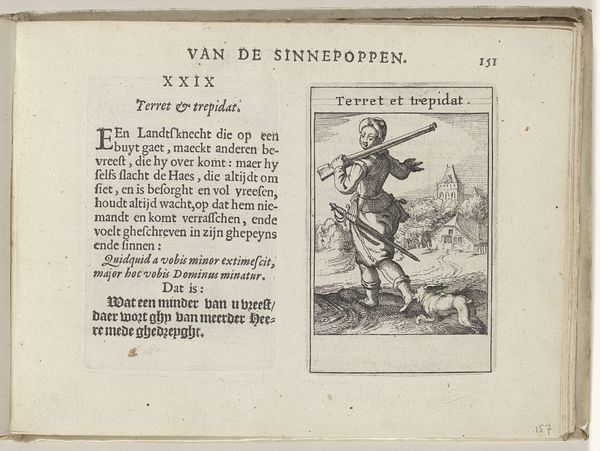
print, engraving
#
narrative-art
#
dutch-golden-age
# print
#
genre-painting
#
engraving
Dimensions: height 137 mm, width 188 mm, height 95 mm, width 60 mm
Copyright: Rijks Museum: Open Domain
Editor: This is “XIX Laetse pompen die coud hebben,” an engraving by Roemer Visscher from 1614. The contrast between light and shadow is very striking and the lines are quite precise; the text accompanying the image really draws me in. How do you interpret this work, focusing on its composition? Curator: From a formalist perspective, I’m drawn to the interplay between the text and image, the use of line to define form and space and the spatial dynamics. Consider the image: it’s meticulously rendered. The engraving technique allows for incredible detail, observe the rendering of the man’s clothing. What semiotic potential do you see in the circle object he holds? Editor: It appears to be an emblem, or seal of some kind. And based on the title "The Lazy pumps who'd gotten cold," the man in the picture seems to embody that sentiment – perhaps that is his job function within this nautical setting. Curator: Precisely! The engraving utilizes formal elements such as line, texture, and contrast to present visual interest. Look how those sharp angular lines capture an overall feeling or meaning beyond just the surface details. It offers insight into hierarchies and perceptions of labor. Does considering these aesthetic elements alter your initial response? Editor: Absolutely. I hadn't considered how the style contributed to understanding the cultural values at play here, as well as social commentary—class division of manual laborers over privileged "masters." Now I'm understanding this from a new perspective by considering how elements like precision, shape, line quality create this visual world full of implications for me!
Comments
No comments
Be the first to comment and join the conversation on the ultimate creative platform.
